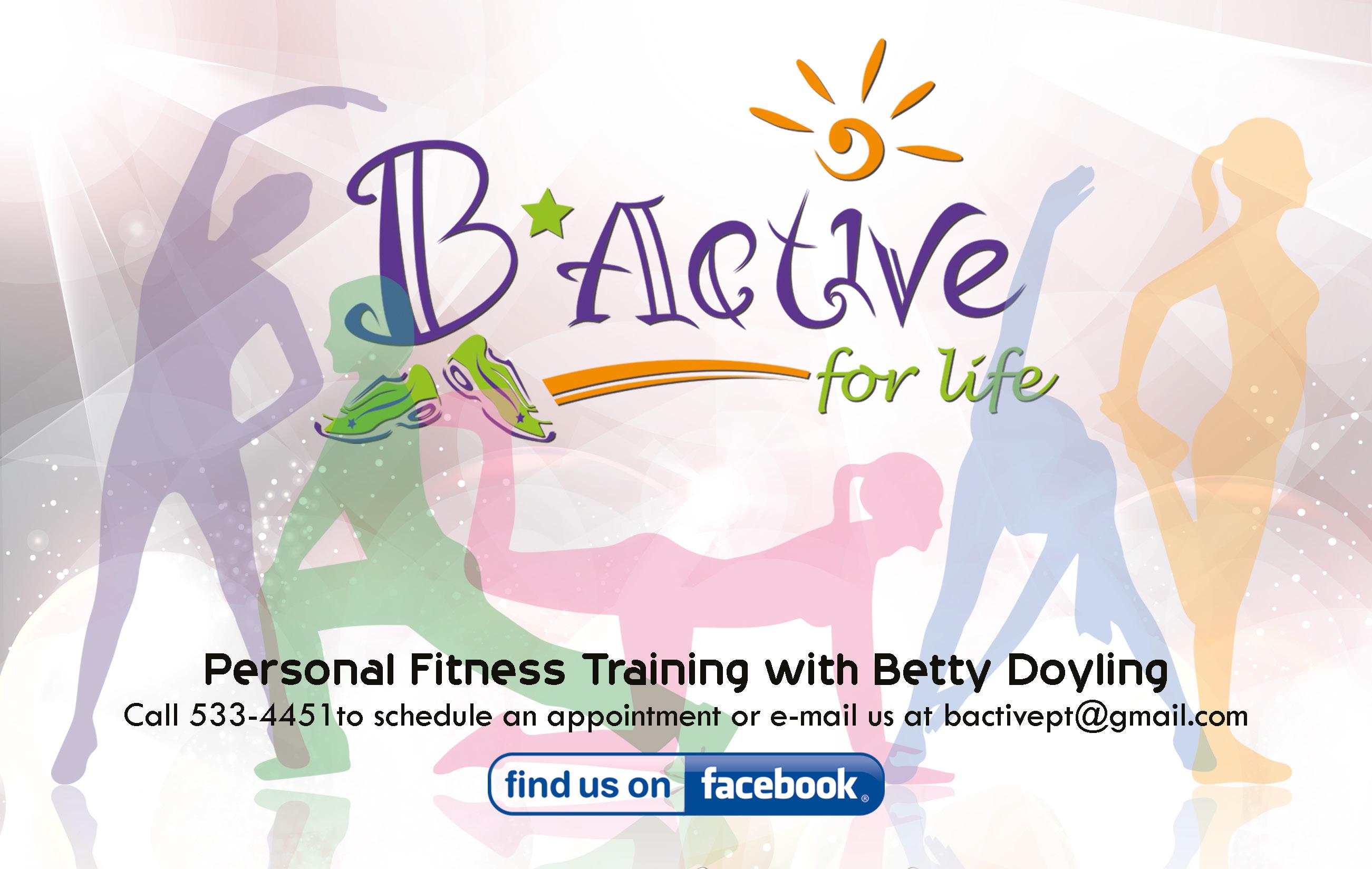
7 minute read
B-Active.........................................................................16
own bodyweight. Lack of equipment to workout can lead to very poorly designed workouts that are based on just a few primary movements like squats, push-ups & sit ups. Short term, this is not an issue. But after a while of repeatedly doing the same things can lead to strength & muscular imbalances, repetitive strain injuries and emphasize poor posture. Make sure that you are doing balanced workouts that work all the major muscles’ groups.
Skipping Strength Based Workouts
Our muscles are the key to reducing frailty as we age, weight management and reducing the risk of injuries from day to day. Unfortunately, with muscles if you don’t use them, you will lose them. If your home workout plan only includes cardio style workouts, you risk neglecting your muscular strength. Try to make sure you’re including some good quality strength-based exercises at least twice a week to help stimulate muscle growth, increase cardiovascular strength, and improve endurance. It is very tempting to skip stretching in any workout. However, skipping your stretch regularly puts you at a higher risk for developing tight muscles which in turn could lead to many injuries or postural issues. The more flexible you are, the more exercises you will be able to do properly, and it will also improve the quality of your workouts. Remember that stretching will not only help you recover from your last workout but will also improve the quality of your next one.
I hope you have a few more things to consider when approaching your workout plans. I wish you the very best of luck with your home training over the coming weeks & if you need any help putting together an awesome home workout routine then reach out to me.
Stay safe and B-Active For Life.

HYDRATION MANAGEMENT IN SPORT
Water constitutes 50-70% of total body mass, split between 65% intracellular, and 35% extracellular. Maintaining optimal fluid balance, or euhydration, is not only essential to general health, but also to optimal performance and recovery in sport. Various sports manifest very different challenges to maintaining euhydration, and both athletes and coach need to understand and manage the variables that contribute to achieving this balance. Athletes must start their sport performance in a state of euhydration; must hydrate appropriately during the activity depending on the duration, replacing fluid lost due to exertion; and must ensure they achieve euhydration before embarking on their next performance. But where athletic performances vary from the extremes of an ultramarathon to a 100m sprint, clearly the extent of the challenge of managing hydration varies greatly. Despite this, there is one constant in sports performance; dehydration of only 1-3% – resulting in what is termed hypohydration – will impair performance in virtually every sport, as well as increase the perception of the effort involved. Likewise overhydrating, resulting in hyperhydration, will disrupt salt balance, the electrolytes that are fundamental to the neurological control of the body and enable muscle contraction, also impairing performance and undermining safety. Managing hydration, therefore, is an essential task in which all athletes and their coaches must be competent.
There are a great number of variables that may impact hydration during any given sport performance. Clearly the longer the event, the greater the opportunity for hydration imbalance and hydration can become not only a performance issue, but also a safety one. Added to duration is intensity of exertion required, which will determine metabolic heat production and relative sweat rate per hour – although maximum sweat rates vary greatly from one individual to another and need to be factored into the assessment and hydration plan. When it was still played outdoors, where court temperatures could reach 55 degrees Celsius, the Australian Open tennis tournament
was traditionally dominated by the fittest players and those that managed their hydration best. Ultramarathons, Test Cricket matches and tournaments where repetitive events are packed into the shortest periods of time possible are other examples where managing hydration is critical to success.
Aside from duration and intensity, environmental factors are the most obvious considerations that will also impact sweat rate and fluid loss, such as ambient temperature, humidity, altitude and air flow, as well as acclimatisation to these. Access to fluids and impact of drinking on performance also affect the ability to maintain hydration. Although most sporting events have now added some form of drink break to the schedule, this is clearly more difficult in a continuous game such as rugby or football compared to tennis in which breaks are built into the rhythm of the match. Finally, there are certain sport-specific factors such as clothing and equipment, that may cause heat retention and compromise hydration; a batsman equipped for pace bowling, for example, can be a real challenge to keep hydrated. Other sport-specific factors such as strict weight divisions may also compromise an athlete’s ability to commence an event in a euhydrated state.
To put this in a Bermudian-specific context, consider Cup Match. High temperatures; high humidity; low air movement on the field due to the heightened stands; a Bermudian batsman with a high individual sweat-rate and fully protected with pads, gloves and helmet for protection against pace bowling; repeated sprints between wickets and, if successful, potentially several hours at the crease; ICC-mandated drink breaks only every 70 minutes. One South African study found sweat rates for batsmen averaging 6 litres per hour in these conditions, or 8.5% of body mass per hour for a 70kg cricketer. Considering decreased performance in sport is seen at total hypohydration levels of only 1%, the challenge to maintain euhydrationin these conditions is extreme.
The natural biological mechanism of thirst is too crude a guide to rely on in sports performance, especially where a sport or environment results in significant insults to hydration, such as endurance sports or hot environments. Several methods for testing relative hydration exist, such as plasma osmolality, plasma volume and urine osmolality, volume and specific gravity, but as these involve blood or urine samples they are impractical methods during many sporting events and may not be available for amateur events at all. Where available they can be useful to establish a baseline, however, and if this is correlated to the athlete’s weight then a euhydrated weight can be established. As most weight loss during sporting events is due to fluid loss, where 1 Litre equates to approximately 1kg, trying to maintain or rehydrating to this baseline weight is a fairly accurate and simple method for managing hydration. When combined with urine colour and thirst, the utility of these three criteria is enough for managing hydration for most sporting events. As a simple guide, closely monitoring body mass during an event will track the adequacy of rehydration,While body mass combined with thirst and urine colour on waking is a good guide for rehydration between performances. With so many environmental and individual variables, to combat dehydration in sport, whilst at the same time avoiding hyperhydration, requires an individualised approach. However, a combined effort by athlete and coach, using aids as simple as a set of scales, can manage this successfully. To summarise the approach to hydrationmanagement in sport:

1. Calculate baseline euhydrated weight using a series of on-waking weigh-ins, combined with urine colour and thirst. This establishes the target maintenance and recovery weight.
2. Pre- and post-exercise weight should be checked regularly until an athlete is familiar with their individual sweat rate per hour in various conditions, taking into account any fluids consumed during exercise. For example, a footballer playing 90 minutes in a mild UK winter environment, pre-game weight 70kg, post-game weight 69kg, 0.5litre fluid consumed during play, has an hourly sweat rate of approximately 1 litre per hour. This establishes a starting rehydration rate of 1 litre per hour in these conditions, to be adjusted according to ongoing pre- and post-game weights and variations in conditions.
3. Rehydration can initially be water, but in more prolonged activities commercial electrolyte-carbohydrate functional beverages will offer more comprehensive fluid and nutrient replacement, while the CHO-electrolyte component – particularly those with Glucose-Fructose-Sodium – have been shown to improve athletic performance.
4. Weight deficits post-performance should be corrected prior to repeat performances on subsequent days. Urine samples and, where available, blood sampling, can be utilised to improve the accuracy of between-performance hydration management.









